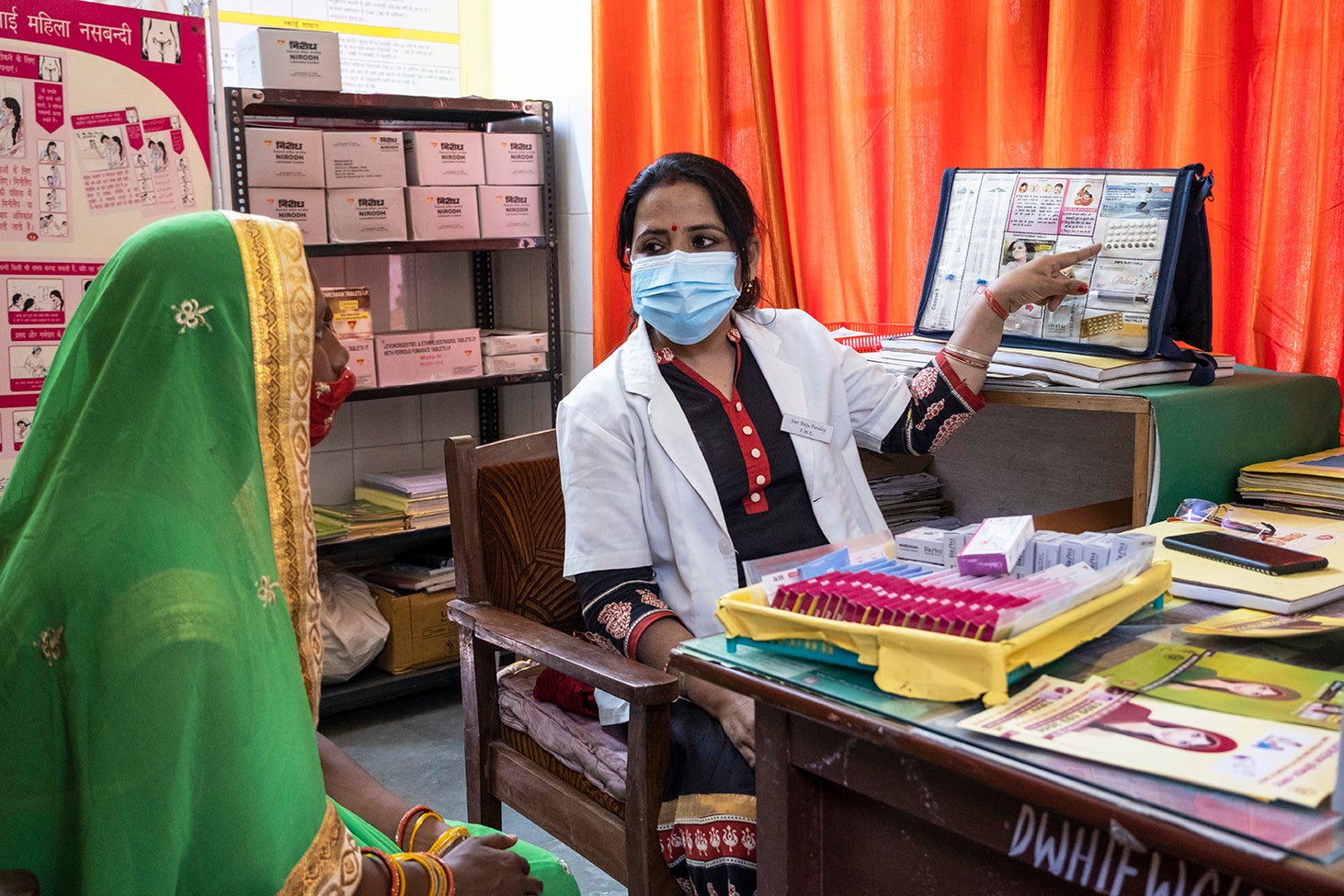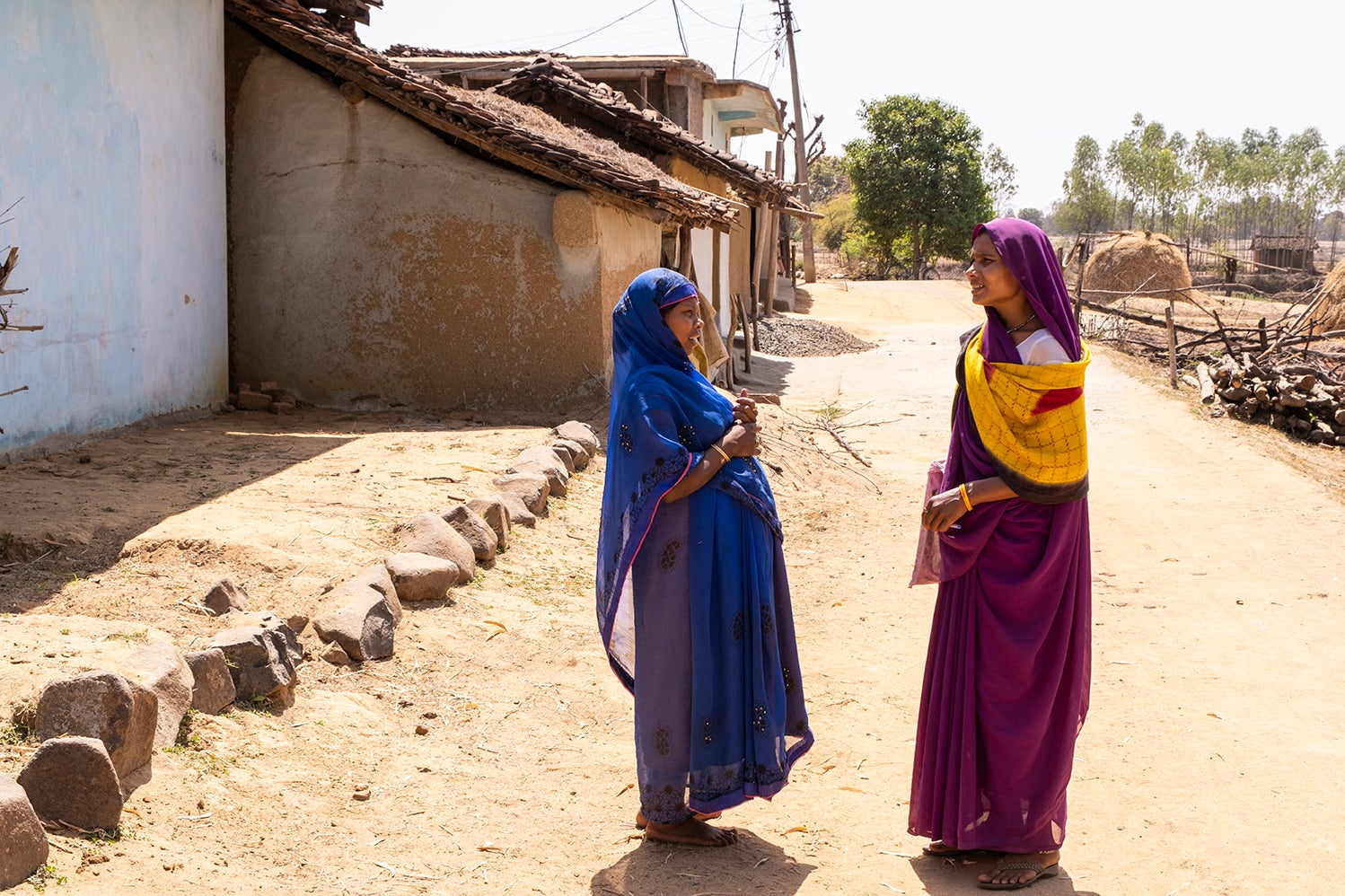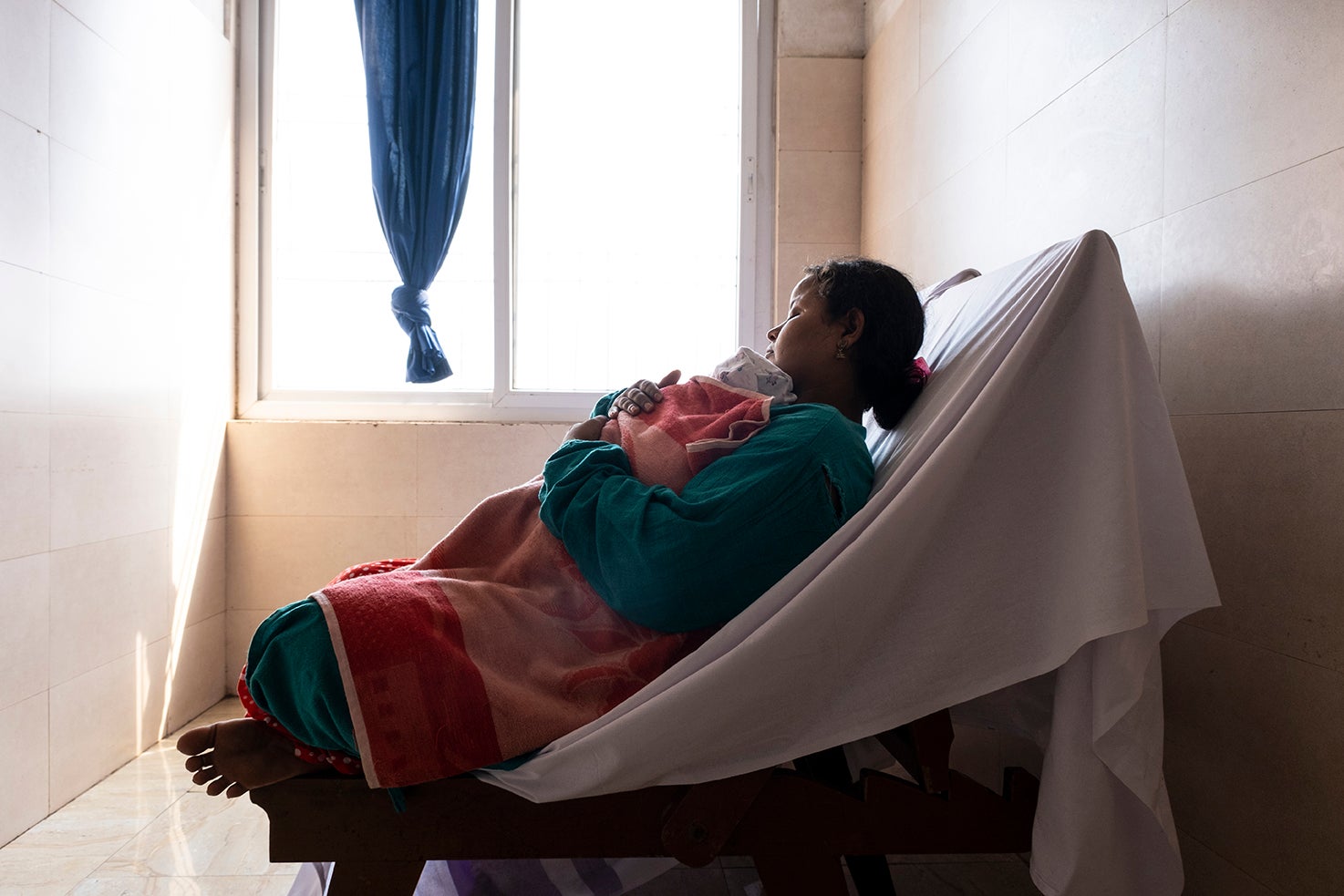Madhya Pradesh, Odisha, Rajasthan, and Uttar Pradesh: Higher Mortality Exemplar States in Neonatal and Maternal Mortality Reduction
In India, four Exemplar states with higher baseline mortality levels have achieved rapid rates of neonatal and maternal mortality reduction since 2000.
Acknowledgements:
Ministry of Health and Family Welfare, India MNH Exemplars Steering Committee, India MNH Exemplars Technical Working Group, Countdown to 2030, and Other Contributors
CONTENTS
Introduction to the Exemplars study in India
India is a diverse country, with a population that grew from 1.06 billion in 2000 to 1.42 billion by 2022. Considering India’s size and diversity, in this analysis, states were grouped into clusters based on their neonatal and maternal mortality levels and per capita incomes. As shown below in Figure 1, these states are accordingly referred to as members of either the higher mortality state cluster or the lower mortality state cluster. While India has made remarkable progress in reducing neonatal and maternal mortality in recent decades, the strategies underlying this progress vary across state clusters. Differences in socioeconomic status and health system capacity by state cluster meant that each cluster faced unique challenges, with maternal and newborn health programming varying by cluster to meet these challenges. As such, Exemplar states within each of the state clusters were identified to highlight lessons from states that had made the most progress from their respective baseline mortality levels.,
This narrative tells the story of how four Exemplar states within India’s higher mortality state cluster achieved progress. Additional context can be found in the , with the story of two Exemplar states within the highlighted separately as well. Throughout this report, key indicators, interventions, policies, and programs that contributed to neonatal mortality rate (NMR) and maternal mortality ratio (MMR) declines will be featured, highlighting opportunities to learn from Madhya Pradesh, Odisha, Rajasthan, and Uttar Pradesh’s success.
Figure 1: Higher and lower mortality state clusters

Fertility decline directly influenced mortality risks and indirectly impacted the broader health system
Improved female education, nutrition, socioeconomic status, and access to family planning contributed to decreases in fertility rates.

Declines in fertility translate to fewer high-risk pregnancies by way of longer birth intervals, lower birth parity, as well as decreased birth rates specifically among teen girls and older women. While this decline in fertility reduced the number of births per woman, the overall number of births per year in the state cluster remained relatively constant because of population momentum (i.e., fewer births per woman combined with an increased number of women of childbearing age resulted in a relatively steady number of births.) As the health system in the higher mortality state cluster expanded over the last two decades, it didn’t have to keep pace with a growing number of births due to this shift. Empowering women with family planning choices, education, and better socioeconomic opportunities therefore has implications not only for their autonomy and health – but also for the broader health system.
Delivery care in facilities became more accessible, shifting births from homes to health facilities
In the mid-2000s, India shifted towards a focus on promoting institutional delivery. Accredited social health activists and expanded health infrastructure helped to make delivery care more accessible to communities.
A growing network of accredited social health activists (ASHAs) helped to link women to the health system, often accompanying mothers to facilities for deliveries. In the higher mortality state cluster, these facilities were primarily lower-level facilities, which offered skilled birth attendance. Hospitals offering comprehensive care remained less available in the higher mortality states due to persistent capacity gaps. Systems were established to streamline the referral process so that in the case of complications, mothers and newborns could be transferred to more advanced facilities. Exemplar states in the higher mortality state cluster also implemented unique initiatives beyond national programming meant to mitigate barriers to delivering in a health facility. For example, Odisha created maternity waiting homes called Maa Gruha to make it easier for pregnant women in rural areas to stay closer to a health facility around the time of their due date.

Pro-poor policies helped the higher mortality states narrow equity gaps in coverage of key MNH services
India instituted conditional cash transfer programs like Janani Suraksha Yojana (JSY) and Janani Shishu Suraksha Karyakaram (JSSK) to incentivize care-seeking. These initiatives particularly helped reduce financial barriers for the most vulnerable groups, among whom coverage increased more rapidly than other groups.

The higher mortality states experienced rapid institutional delivery rates during the mid-2000s following the establishment of the JSY program. This pro-poor initiative helped accelerate progress in the higher mortality state cluster. Exemplar states in the higher mortality state cluster also implemented unique pro-poor policies to complement these national programs. For example, Madhya Pradesh’s Mukhya Mantri Shramik Seva Yojana incentivized antenatal care, institutional delivery, breastfeeding, and newborn vaccination while Odisha’s Shishu Abond Matru Mrutyuhara Purna Nirakaran Abhiyan (SAMPurNA) Yojana program helped to cover the costs of traveling to health facilities especially for delivery care.
Contextualizing the current and future progress of the higher mortality state cluster in an Integrated Mortality Transition Framework
Between 2000 and 2018, the higher mortality state cluster progressed from phase I to early-phase III of the integrated mortality transition framework
This framework helps to highlight the progress that India’s higher mortality state cluster has made in the last two decades, in part linked to fertility decline, increases in health service coverage, and a declining burden of direct causes of maternal and newborn death. In particular, the transition framework allows for comparisons across sub-national regions to learn from their success at every phase and consider how to move towards the next. The framework can thus be leveraged to highlight aspects of maternal and newborn health that may be key to target as states look ahead and continue to reduce NMR and MMR.

Exemplars in Global Health program
The Exemplars in Global Health program aims to learn from countries that have made rapid progress in improving health outcomes and disseminate this evidence to inform health policy and funding decisions. Our aim is to research success stories from low- and middle-income countries and share findings that can be useful for leaders looking to act in comparable contexts.
In selecting Exemplar countries, we reviewed evidence to identify countries that outperformed their peers in vital areas of public health, controlling for factors such as economic growth. In this way, we aim to provide more actionable, policy-relevant insight for stakeholders about how health progress can be made despite resource limitations.
Guided by research partners and technical advisers, we conduct quantitative and qualitative analyses to validate our initial assessments and assess factors that contribute to a country’s exemplary performance. Research in and across Exemplar countries could help ministries, nongovernmental organizations, and multinational bodies address key public health issues in low- and middle-income countries.
By studying proven strategies to prevent disease, malnutrition, and other conditions that burden populations of low- and middle-income countries, we aim to create a list of data-driven narratives that can serve as resources for leaders looking to improving health within their own countries. The following narrative focuses on factors that contributed to Madhya Pradesh, Odisha, Rajasthan, and Uttar Pradesh’s exemplary reductions in neonatal and maternal mortality.
MADHYA PRADESH, ODISHA, RAJASTHAN, AND UTTAR PRADESH: HIGHER MORTALITY EXEMPLAR STATES IN NEONATAL AND MATERNAL MORTALITY REDUCTION

Ask an Expert
Our team and partners are available to answer questions that clarify our research, insights, methodology, and conclusions.
